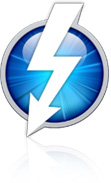Our digital planet is being transformed every day by new ideas and inventions. In this fascinating Fast Company article, Farhad Manjoo describes how Apple, Facebook, Google and Amazon are battling for the future of the innovation economy. If you want to better understand how the “Fab Four” will change your life over the next few years, this feature-length essay is well worth reading.
fastcompany.com/magazine/160/tech-wars-2012-amazon-apple-google-facebook
In this NPR Fresh Air interview, Terry Gross talks to the article’s author, Farhad Manjoo.
npr.org/2011/11/03/141976518/the-war-between-google-amazon-facebook-apple
Category: Chapter 2 Hardware Basics: Inside the Box
Steve Jobs has been called one of the greatest visionaries of our time. In this brilliant, inspiring 2005 Stanford University commencement speech, Jobs reflects on life, death, and values. This man lived every day as if it was his last, and changed the world in the process.
news.stanford.edu/news/2005/june15/jobs-061505.html
During his tenure as CEO of Apple, Steve Jobs had a profound impact on computers, the music industry, home entertainment, phones, and (most importantly) our day-to-day lives. He transformed Apple from a garage startup into the most valuable company in the world. When he announced his resignation as CEO, the press responded with many thoughtful articles about this iconic visionary, including these:
The microprocessors that power today’s computers are running out of space. For decades engineers have found ways to shrink the circuitry that’s etched onto each chip’s surface, but that trend will soon collide with hard laws of physics. Intel engineers may have found a way to continue the relentless march toward ever-faster computers: 3D circuitry containing tiny fins of silicon that rise above the chip’s surface. http://www.nytimes.com/2011/05/05/science/05chip.html
The_Green_IT_movement_has_lost_the_plot
 Intel co-invented USB. Apple invented FireWire. Now the two companies have collaborated to produce Thunderbolt, a fast, flexible technology that may eventually make both of those earlier technologies obsolete. Born in Intel’s research labs, Thunderbolt first appeared earlier this year in Apple’s Macbook Pro. Thunderbolt will provide lightning-fast connection speeds for monitors, hard drives, input devices, and other types of peripherals, once those peripherals are redesigned with Thunderbolt interfaces.
Intel co-invented USB. Apple invented FireWire. Now the two companies have collaborated to produce Thunderbolt, a fast, flexible technology that may eventually make both of those earlier technologies obsolete. Born in Intel’s research labs, Thunderbolt first appeared earlier this year in Apple’s Macbook Pro. Thunderbolt will provide lightning-fast connection speeds for monitors, hard drives, input devices, and other types of peripherals, once those peripherals are redesigned with Thunderbolt interfaces.www.intel.com/technology/io/thunderbolt/index.htm